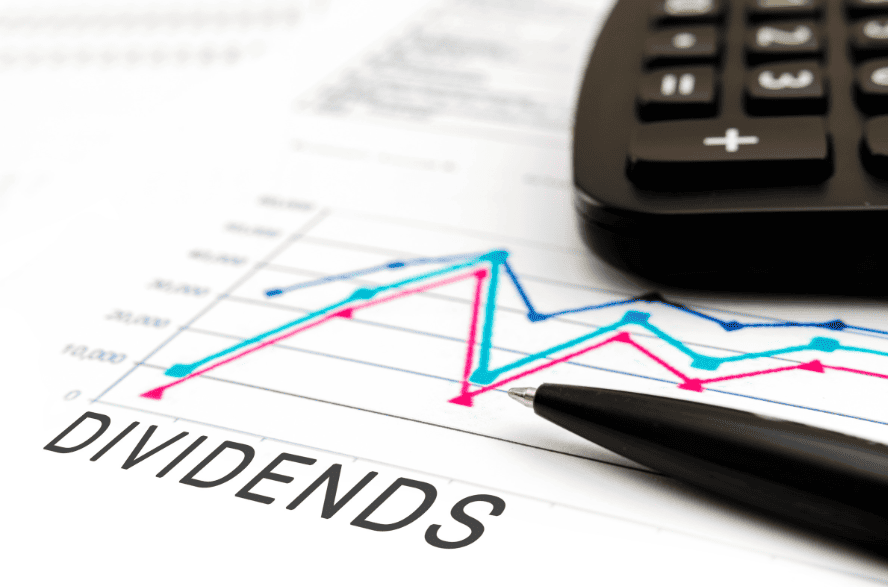Investing is an art that has the potential to either yield exponential results or be a learning curve. The same applies with dividend investing.
Table of Contents
Among the myriad of investment strategies available to individuals, dividend investing stands out due to its dual income approach – appreciating stock prices combined with dividends.
Understanding Dividend Investing
Navigating the intricate world of investments, one quickly realizes the unique appeal of dividend investing.
As opposed to relying solely on the appreciation of stock prices for returns, dividend investing offers a two-fold reward: potential capital gains and dividends.
At its essence, dividends represent a company’s gesture of sharing its profits with its loyal shareholders. But, can dividends make you rich?
Delving Deep into Dividends
Dividends serve as a reflection of a company’s financial health and its commitment to returning value to shareholders. But what exactly are they?
Definition: At its most basic, dividends are distributions made by corporations to their shareholders.
These distributions are carved out from the company’s earnings. Instead of retaining or reinvesting all the profits, a portion is shared with investors.
Typically, dividends are paid in cash, but sometimes they’re given out as additional shares, which is termed a “stock dividend.”
Frequency: The periodicity of dividend payouts varies. Some companies disburse dividends quarterly, aligning with their earnings reports, while others might do so monthly, semi-annually, or annually.
The frequency often reflects the company’s cash flow status and its dividend policy.
The Potential Wealth Power of Dividend Investing
“Can dividends truly contribute to significant wealth generation?” It’s a question that beckons contemplation.
While riding the wave of soaring stock prices, or capital gains, remains a prevalent investment strategy, dividends hold their ground, especially when market waters get choppy.
Consistent Income Stream: Markets are unpredictable. There can be prolonged periods where stock prices remain flat or even plummet. However, a robust company with a history of consistent dividend payouts can be a beacon during these times.
Even when capital gains are elusive, dividends can ensure a steady income flow to the shareholder, acting as a cushion against market volatilities.
Power of Reinvestment: The magic of compounding is real. Instead of pocketing the dividend payouts, investors have the option to reinvest them by buying more shares of the stock.
Over time, as these additional shares also yield dividends, the growth can be exponential. This reinvestment strategy can significantly amplify wealth, especially when maintained over long durations.
Hedge Against Inflation: Inflation, the perpetual rise in the general price levels, erodes purchasing power. A dollar today might not buy you as much a year from now.
However, consistent and potentially growing dividend income can act as a counter to inflation, preserving, and even enhancing an investor’s purchasing power.
When chosen wisely, dividend-paying stocks can offer inflation-adjusted returns, safeguarding real income.
Dividend Investing – Choosing the Right Stocks
The allure of dividends can sometimes overshadow the essential task of due diligence. Simply chasing high dividend yields can be myopic.
Investing in dividend stocks requires a strategic blend of understanding the company’s financial health, its commitment to shareholders, and its future growth prospects.
In essence, it’s not just about the dividend but the entire package the company offers.
Navigating the Waters of Dividend Yield
Dividend yield serves as a quick metric that tells an investor the return on investment for a dividend stock, in terms of the company’s annual dividend payout. But how does one interpret it?
Calculation: Dividend yield gives a percentage representation of a stock’s annual dividend relative to its price.
The formula is straightforward: Annual dividends per share divided by the stock’s current market price. So, if a company pays $2 annually and the stock trades at $40, the dividend yield is 5%.
Comparison: Spotting a high dividend yield might initially seem like hitting a jackpot. However, context is crucial. If the average dividend yield in the sector is 2% and you encounter a stock offering 10%, tread with caution.
It’s essential to compare dividend yields of companies operating within the same sector. A yield much higher than the industry average could be a red flag, indicating potential underlying issues or market skepticism about the stock’s future prospects.
Diving Deep into the Company’s Financial Health
The promise of dividends isn’t sufficient. The company must be in a position to fulfill that promise consistently.
Payout Ratio: This ratio acts as a magnifying glass over a company’s earnings and its dividend distribution. Calculated as dividends divided by net income, the payout ratio essentially shows the percentage of profits distributed as dividends.
A ratio nearing or exceeding 100% can be a concern — it suggests the company might be distributing more than it’s earning, which could be unsustainable. Conversely, a very low ratio might indicate untapped potential for higher dividends or a company’s emphasis on reinvesting profits.
Debt Level: Debt is a double-edged sword. While it can fuel growth, excessive debt can choke a company’s finances. For a dividend investor, understanding a company’s debt profile is non-negotiable.
A heavily leveraged company might face challenges in maintaining its dividend payouts, especially during economic downturns.
Analyze the company’s debt-to-equity ratio and compare it with industry peers to gauge its financial leverage. If a company is consistently using a significant chunk of its profits to service debt, its dividends might be on shaky ground.
Dividend Investing Strategies
To maximize the potential of dividend investing, it’s crucial to adopt effective strategies tailored to individual financial goals.
Dividend Reinvestment Plans (DRIPs)
- Automated Reinvestment: Instead of receiving dividends in cash, use them to purchase additional shares of the stock.
- Compound Growth: Over time, DRIPs can lead to exponential growth as dividends from increased shares get reinvested.
Diversify Your Portfolio
Relying on a single or a handful of dividend stocks can be risky.
- Industry Diversification: Ensure your dividend stocks span multiple industries to mitigate sector-specific risks.
- Global Exposure: Consider global dividend-paying stocks to benefit from economic growth in diverse regions.
Potential Risks and Downsides
While dividend investing offers numerous advantages, it’s not devoid of risks.
Dividend Investing Cuts or Elimination
Companies facing financial hardships might reduce or completely eliminate dividends.
Impact: This can lead to decreased income for investors and a potential drop in stock price.
Overemphasis on Yield
Chasing stocks with extremely high yields can be perilous.
Yield vs. Sustainability: A high yield might result from a plummeting stock price, which could indicate underlying company issues.
Divident Investing – Takeaway
Dividend investing is a robust strategy that complements the quest for capital appreciation with the allure of consistent income.
By understanding the nuances of dividends, assessing potential stocks meticulously, and diversifying the portfolio, investors can harness the power of this investment approach.
However, as with all investment methods, it’s crucial to stay informed, periodically reassess your portfolio, and be prepared for market volatilities. Both management and trading of dividend shares can be done through using a trading platform like HALO Technologies.



